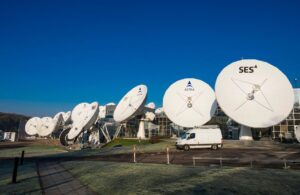Satellite operators near June 1 C-band clearing milestone
By Jason Rainbow

TAMPA, Fla. — As bitter legal disputes and billion-dollar price tags dominate headlines around C-band, work is frantically underway to clear the spectrum for U.S. terrestrial 5G wireless operators.
Satellite operators Intelsat and SES, which stand to gain the most from clearing the frequencies in time, are nearing a June 1 internal housekeeping milestone for vacating part of the band this December.
They are eligible for more than $2 billion from the Federal Communications Commission (FCC) if they hit the regulator’s Dec. 5 deadline for clearing 120 MHz of C-band.
But they will lose 5% of that if they are a day late, and then 5% less every month all the way to zero if wireless operators still cannot use the spectrum without interfering with satellite systems.
With the COVID-19 pandemic disrupting supply chains and site access, the pressure is on operators to reimburse costs they are already incurring to shift the frequencies — including ordering new satellites.
Incumbent C-band spectrum holders committed billions of dollars in 2020 on new satellites, which will be important for hitting the next spectrum clearing milestone Dec. 5, 2023.
For now, they are mainly moving traffic around their current fleets to clear 120 MHz of the band.
This first involves grouping C-band customers on existing satellites together into a narrower swath of C-band, so they can be partitioned off to make room for wireless operators that bought the frequencies earlier this year.
“You’re moving cars around the parking lot so that they’re together, and contiguous, so there’s a big empty space you can cut off and send away,” Tom McNamara, vice president of C-band transition at Intelsat, told SpaceNews in an interview.
Operators then need to manage the impact on the ground, under phase one of this process that ends June 1, including sometimes upgrading customer equipment before moving them to the new service and then turning off the old one.
McNamara said COVID-19 has caused some disruption to this process, but it has been manageable. Sometimes the company has been forced to guide on-site teams remotely to install equipment if it cannot get access to facilities.
However, the poor quality of Earth station registration data and C-band customer contact information has been causing logistical headaches for satellite operators. Before the incumbent C-band holders can ship upgrade equipment, they have had to invest a lot of time cleaning up old data, and cross-checking sources.
The second phase
After phase one ends June 1, the next step involves reaching every Earth station across the United States to install filters to guard against interference.
Unlike satellite operators that use the same C-band frequencies across the country, because their customers point antennas to certain satellites, wireless operators buy frequencies covering certain geographies.
That means every satellite operator in a certain geography that a wireless operator has bought spectrum for has to move out before it can be used for terrestrial 5G.
“All the satellite operators have to move at the same time and all have to get out — and wait until the last guy is out — to use the space,” McNamara said.
Despite an ongoing legal battle in Intelsat’s bankruptcy court, where SES challenges Intelsat’s access to the C-band proceeds, the two are working closely together on joint sites.
RSM US, an audit and consulting firm, is tasked with coordinating the C-band transition process, ensuring satellite operators are marching to the same beat as the deadline nears.
May 28, 2021 at 09:43PM
via SpaceNews read more...

Post a Comment